Mine and explore caves in pursuit of foes and riches. Fear is not acceptable in the face of adversity, and only hatred is allowed for those who stand in your way. ~ Beltar’s Command1
In 5th edition D&D we don’t see very many gods walking the earth, but their avatars are present and at least two (Auril and Tiamat) have been featured in major adventures (Tyranny of Dragons & Rime of the Frostmaiden). We have also seen several demon lords featured (Out of the Abyss) and archdevils also make frequent appearances (Descent into Avernus and any number of adventures that feature Asmodeus in some way). Therefore, it is not out of the question that someone will find a use for the Goddess Beltar in a 5e D&D game. This is especially true if you run your game in Greyhawk, but Beltar can also be useful and an unknown entity in your homebrew world, or even as an upstart god in the Forgotten Realms.
Beltar makes a great villainous leader, motivating followers directly and indirectly, wielding a heavy influence on various different types of humanoids and undead, making for good low-level foes. At mid to high levels the PCs can face intelligent cultists led by a charismatic follower of Beltar, possibly a necromancer, who idolizes beholders or dragons. Perhaps a nest of Yuan-Ti has settled in the local area and spread the word of Beltar, gathering minions to their cause. At higher levels the PCs may face Beltarians who tempt the fates by summoning Mariliths in the hopes that one of them will be the Goddess herself. As Beltar is the Goddess of caves, mines, and pits, it is easy to integrate clues about the activities of her followers into any underground exploration. But now I am getting ahead of myself! This post outlines Beltar’s qualities and attitudes, as well as her abilities, powers, and followers, including the places where Beltarian worship is on the rise.
Appearance & Attitude
She appears as a hag, her posture stooped, an ugly visage of leathery skin, dressed in filthy, stained, thread-bare clothes. Many will pay her no heed, dismissing her by appearance alone. Those foolish ones quickly learn the error of their ways for Beltar is the Goddess of deep caves, pits, and malice2; her reach is long and she is patient. Though a hag-like stature is her first form, Beltar is capable of shapechanging into any human or humanoid form, and she will take the appearance of the best form for her purposes3. She also has an affinity for assuming the form of a red dragon, beholder, or type V demon3,4,5. A Type V demon is a six-armed creature with the upper torso and head of a human woman and the lower body of a snake, otherwise known as a Marilith6. The Images throughout this post are compilations of Beltar’s favored forms through the various editions.
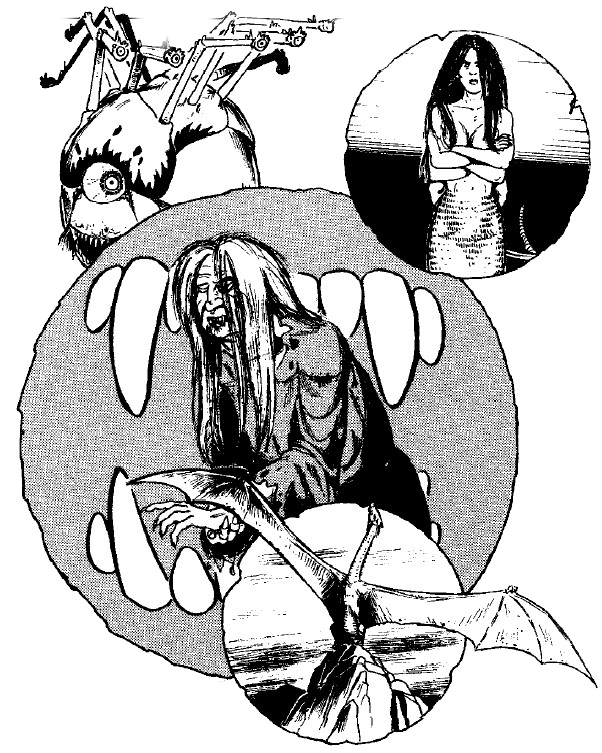
Along with being able to take these forms, Beltar has qualities of many different types of creatures. Her bite causes vampirism and she can charm in a manner similar to vampires. Her claw attack drains energy levels in a manner reminiscent of wights and wraiths and she is immune to attacks from undead. In fact, she can command undead in her presence (high level Liches can attempt a save) and summon up to ten specific undead creatures (wights, wraiths, spectres, vampires, or shadows), though the type summoned is random3. And, of course, in 1st edition AD&D, the edition for which Beltar was first created, there is a list of abilities common to every deity and Beltar also possesses those powers2.
Beltar is chaotic evil but she has neutral tendencies, providing her with a patience not often seen among chaotic deities. This has helped her bide her time and slowly cultivate the growing population of Beltarian adherents among multiple different groups and across wide swaths of the Flanaess. In previous editions her domains of influence included Chaos, Earth, Evil, Mysticism, and War1,7. In general, Cleric PCs are not going to choose Beltar as a prime deity unless you are playing an evil campaign. However, if you want to create a cult leader or Priest of Beltar NPC, they should choose from one of the following 5e Cleric domains: Death, Grave, Trickery, Twilight, or War.
Priests & Worshipers
Clerics of Beltar wear black or dark grey vestments and perform their grotesque ceremonies in deep caves or deep dungeon levels, far below the surface3. Her priests seek to arouse hatred in others and perform ceremonies that include sacrifice and, depending on the sect, cannibalism4. The majority of her worshipers are humanoids, but many humans who delve deep into the earth, mining and gem-seeking, also worship her4,8. Beltar’s favored terrain being caverns and hidden spaces underground, her followers often have extensive knowledge of caves, crevices, deep rifts, and underground grottoes9. Her priests and followers of a fighting bent tend to favor unarmed fighting or the use of simple spiked gauntlets, so as to emulate the Goddess’ clawed attack2,7. She encourages her followers to form armies and wage war on hated foes. Her armies are compelled by her will to ally with red dragons, beholders, demons, or greater undead2.
The holy symbol of Beltar is a set of fangs emerging from the dark, closing to bite2,7. Temples and shrines honoring Beltar often feature statues of type V demons (Mariliths) and red tapestries adorned with beholders and dragons. The association of a Marilith’s snake body and imagery including fangs has led to rumors of Beltar being a snake goddess and the development and rise of snake cults4,2. Recent reports of Yuan-Ti and Naga worshiping Beltar10, and indications that some grippli populations revere her as a snake-god2, have done nothing to quell these rumors. Beltar is said to be a cruel Goddess and her shrines are often trapped with spells causing feeble-mindedness and stupidity if she is offended or thieves attempt to steal the gems often places in the eyes of the beholders found on tapestries and paintings11.
The Rise of Beltar
Though she is a Goddess of Suel origin, and was heavily worshiped by the ancient Suloise and their ruling families, her worship fell out of favor with the destruction of the Suloise empire more than 400 years before the Aerdian Empire was established12. As such, she has spent centuries gaining little reverence from Oerth’s Suel population4, leading her to seek out new worshipers. First cultivating worship by orcs, gnolls, bugbears, and ogres3, her faith has spread far and wide, eventually culminating in human worship and supplication3 in several regions of the Flanaess. Her worshipers can now be found not only in the Spindrift Isles13, but also along the southern coast of Relmor Bay9, where a particularly powerful sect can be found based in Shargallen9. Beltar is the primary deity of a sect of Yuan-Ti in the hills around the City of Greyhawk10, she gathers Derro followers unto her in great caverns of the Rakers and Corusk Mountains14, and her influence has made her a dreaded deity for the hill barbarians of the Abbor Alz15. Beltar is worshiped by several cannibalistic tribes in the Amedio Jungle as well as multiple groups in Hepmonaland4. There are even whispers that some cities in the Great Kingdom have relatively large contingents of worshipers giving the Goddess of Malice her due3. The list of places where worship of Beltar grows includes almost every major mountainous region (Corusk Mountains, Crystalmists, Griff Mountains, Hellfurnaces , and The Rakers), multiple hilly regions (Abbor Alz, Blemu Hills, Cairn Hills, Drachensgrab Hills, Flinty Hills, Gull Cliffs, Hestmark Highlands, and Kron Hills), and several swamp and jungle regions (Amedio Jungle, Hepmonaland, Vast Swamp, and most likely the Hool Marshes as well). The list of sizeable towns with a worshiper presence includes Cantona (Woolly Bay), Hammensend (Nyrond), Hardby (Woolly Bay), Highport (Pomarj), Kalen Lekos (Pomarj), Kalstrand (Ahlissa), Kroten (Lendore Isle), Lo Deniq (Lendore Isle), Naerie (Azure Sea), Seltaren (Duchy of Urnst), Shargallen (South Province), and Trennenport (South Province). There is even a sect of Beltar strong enough to maintain a temple in Erelhei-Cinlu16, in the vault of the Drow deep below the Hellfurnaces.
Allies & Enemies
Any deity that represents good is, obviously, opposed to Beltar. She gains specific enmity from Jascar, who takes the form of a Pegasus or Great Horse when a disagreement leads to a physical fight1. Wastri17 and Wee Jas4 also strenuously oppose Beltar, though for different reasons; Wastri courts the same worshipers as Beltar and Wee Jas is offended by Beltar’s chaotic nature. Beltar is a solitary God who does not often ally with others, but her Suel followers often worship her alongside Syrul and Pyremius13. Hextor maintains a tense, but workable relationship with Beltar as he sometimes needs the help of other deities as he moves against his brother, Heironeous18.
References:
- Gary Holian et al., Living Greyhawk Gazetteer (Renton, WA: Wizards of the Coast LLC., 2000), 166.
- Gary Gygax, A Guide to the World of Greyhawk Fantasy Setting (Lake Geneva, WI: TSR Inc., 1983), 36-37, 63.
- Lenard Lakofka, Dragon Magazine #89, vol IX, no. 4 (Lake Geneva, WI: TSR, Inc., 1984), 21-22.
- Sean Reynolds, The Scarlet Brotherhood (Renton, WA: Wizards of the Coast, LLC., 1999) 11-14, 80-83.
- Sean K. Reynolds and Chris Pramas, Slavers (Renton, WA: Wizards of the Coast, LLC., 2000) 53-54, 90-93, 106, 117.
- Gyary Gygax, Monster Manual (Lake Geneva, WI: TSR, Inc., 1979), 19.
- Eric Mona, et al. Living Greyhawk Journal vol 1, no. 3 (Renton, WA: Wizards of the Coast LLC., 2001), 19.
- Anne Brown, Player’s Guide to Greyhawk (Renton, WA: Wizards of the Coast, LLC., 1998) 20, 24.
- Carl Sargent, Ivid the Undying (Lake Geneva, WI: TSR Inc., 1995), 132.
- Carl Sargent, et al. The City of Greyhawk (Lake Geneva, WI: TSR, Inc., 1989) adventure card 19.
- Lenard Lakofka, L5b The Kroten Adventures (Dragonsfoot.org, 2006) 27.
- Lenard Lakofka, The Oerth Journal #01 (Council of Greyhawk, 1995) 108.
- Lenard Lakofka, L5a The Kroten Campaign (Dragonsfoot.org, 2006) 10-11.
- Roger Moore, Dragon Magazine #241 vol XXII, no. 4 (Lake Geneva, WI: TSR, Inc., 1997) 41-42.
- Anthony Pryor, WGR3 Rary the Traitor (Lake Geneva, WI: TSR, Inc., 1992) 16.
- Frederick Weining, Dragon Magazine #298 vol XXVII, no. 3 (Renton, WA: Wizards of the Coast, LLC., 2002) 77.
- Russell S. Timm, The Oerth Journal #08 (Council of Greyhawk, 1998) 33.
- Bruce R Cordell, Bastion of Faith (Renton, WA: Wizards of the Coast LLC., 1999) 42, 87.
If you have read this far, thank you so much. I appreciate you!
Until Next Time, I wish you good gaming!
~DMSamuel

Everything in this post is unofficial Fan Content permitted under the Fan Content Policy. Not approved/endorsed by Wizards. Portions of the materials used are property of Wizards of the Coast. ©Wizards of the Coast LLC.


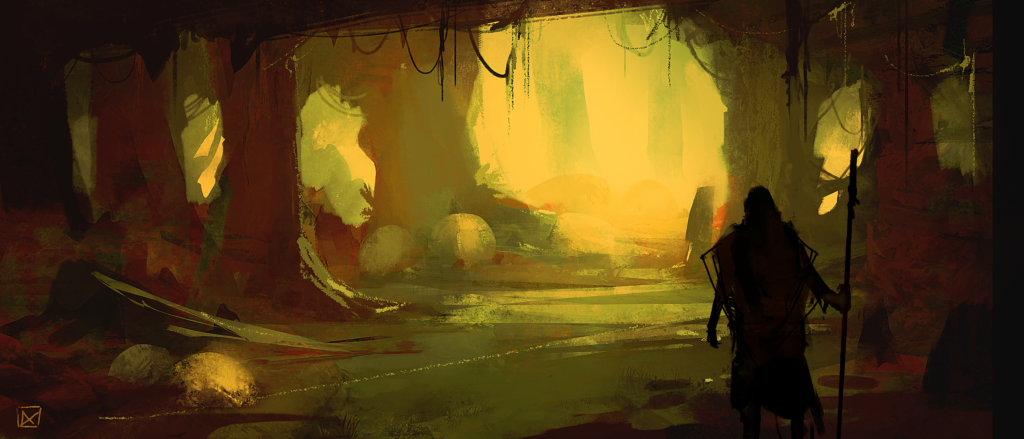
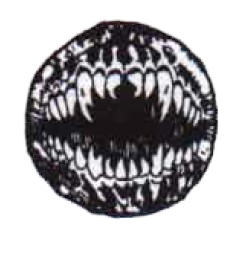
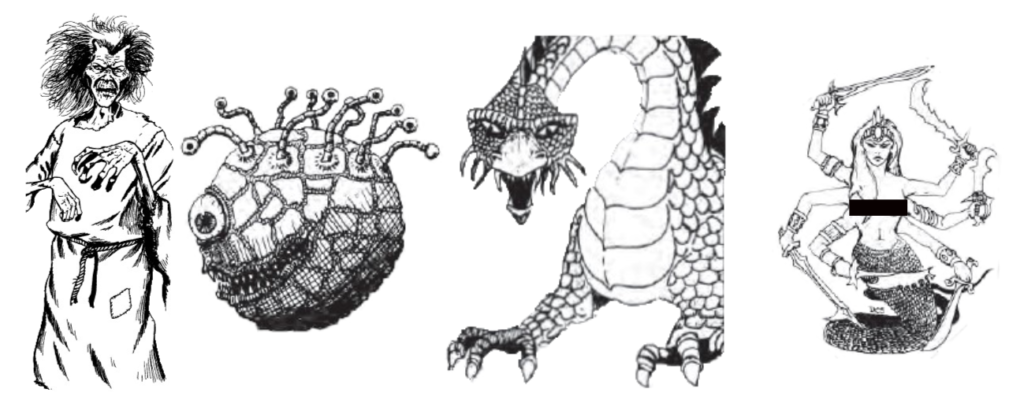



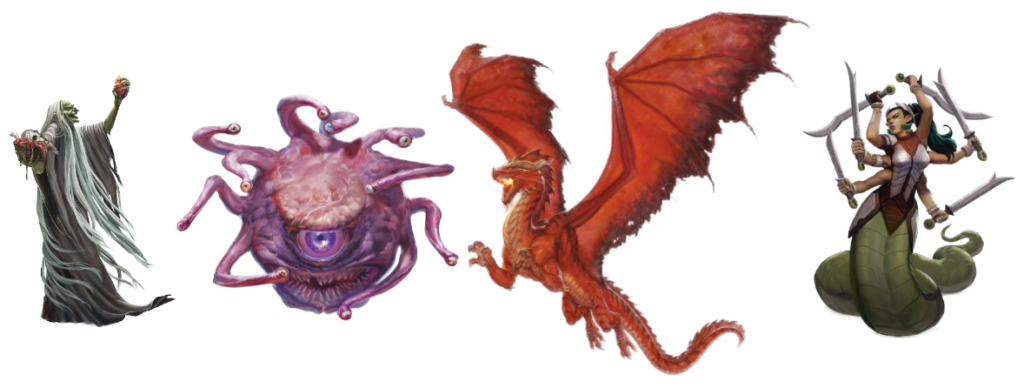
Thanks, this is a valuable addition to running Vault of the Drow.